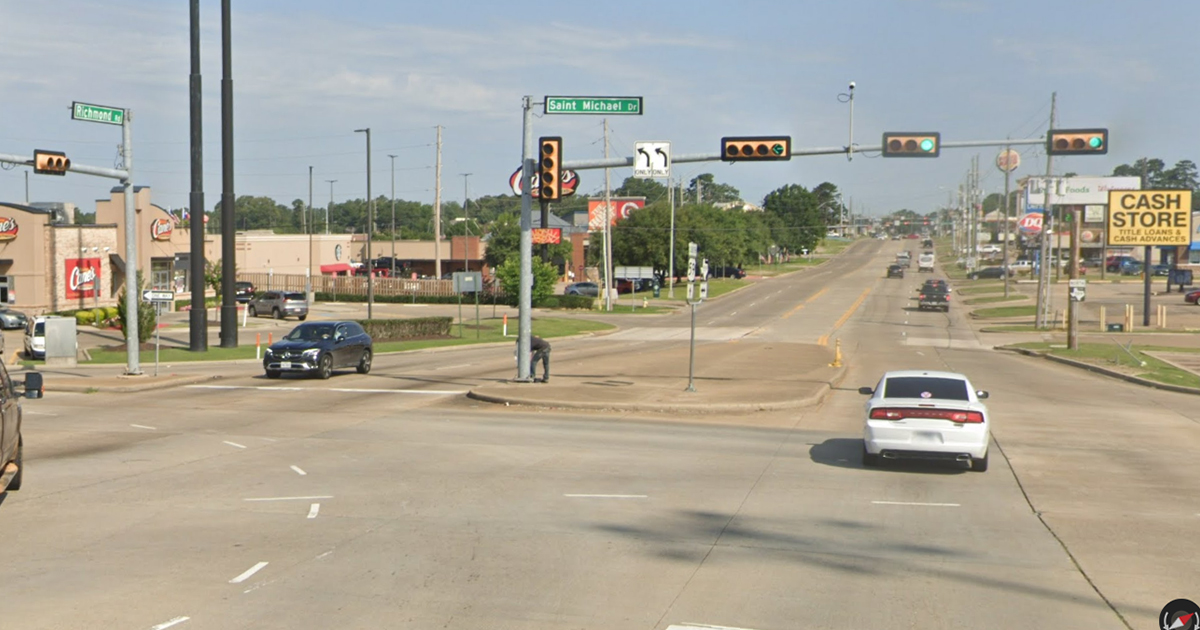Texarkana, Texas city officials are moving forward with a proposed traffic ordinance designed to improve safety at signalized intersections by restricting pedestrian presence in designated “street safety zones.”
The change to the ordinance was approved at the October 13 Texarkana, Texas City Council meeting.
The change comes as state and national data continue to show intersections as one of the most dangerous areas for vehicle–pedestrian interactions. According to TxDOT, Texarkana has recorded 123 pedestrian-related crashes since 2019, resulting in 11 deaths and 115 injuries. Over the same period, the city has seen 2,709 total intersection crashes, with 5 fatalities and more than 1,000 injuries.
National data reflects similar trends. The National Highway Traffic Safety Administration (NHTSA) reported more than 7,300 pedestrian deaths in 2023, with roughly one-third occurring at intersections.
What the Ordinance Would Do
The changes establish a uniform 200-foot “street safety zones” around all signalized intersections within the city. Key components include:
Prohibiting pedestrians from standing, lingering, sitting, or placing objects on medians, raised splitter islands, or in safety zones near intersections
Allowing exceptions for legal street crossings, emergencies, public officials and utility workers
Providing enforcement tools for police to address unsafe behavior without broad restrictions on normal pedestrian activity
City engineers say the buffer is intended to reduce distraction and reaction-time issues for drivers approaching a stoplight — especially at 40 mph, where braking and decision distances can reach 600 to 825 feet under TxDOT roadway design standards.
Why the Change Is Being Proposed
Officials say the ordinance aligns with TxDOT’s “Be Safe. Drive Smart.” campaign, which stresses shared responsibility between drivers and pedestrians. The city argues that the measure focuses on a documented problem: unpredictable pedestrian movement at intersections, particularly on or near medians and splitter islands.
The proposal cites traffic-engineering data showing that even small obstructions — or a pedestrian who hesitates or lingers in the roadway — can increase crash risk by forcing drivers to react more quickly at high-risk conflict points.
Education First, Enforcement Second
Texarkana, Texas Police say they support the effort and plan to emphasize community outreach before writing any citations.
“Our goal is to educate before we enforce,” TTPD public information officer Shawn Vaughn told TXK Today. “We will begin with a 30 to 45-day public education campaign to make sure everyone understands the new rules and why they matter. Enforcement will follow only after people have had time to adjust and ask questions.”
Police officials say the approach mirrors other recent safety campaigns, giving the public time to adapt while reinforcing the goal of reducing preventable crashes.
‘Least-Restrictive, Most Practical’ Approach
The ordinance, which adds new language to Code Chapter 26 (“Motor Vehicles and Traffic”), is being framed as a targeted safety measure rather than a broad pedestrian crackdown. City staff describe it as a “least-restrictive” strategy that sets clear expectations, helps officers address risky behavior, and avoids overreaching into sidewalks or city corporate limits.
The measure updates wording from a previous draft by clarifying definitions and removing a redundant subsection on sidewalk usage.


